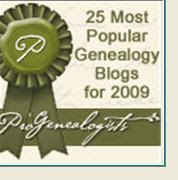Edith's father Ernest forsaw problems ahead and applied for visas for the family. She was 3 years old when they embarked on the SS Seattle in Bremen in July 1938 and went to a new life in San Francisco, leaving behind many Luedinghausen relatives, and some who would be hidden by non-Jews.
On a picture-postcard June day, in the quaint, tree-shaded town of Luedinghausen in northern Germany, my mother and I stood in front of 5 Bahnhoffstrasse where three brass-plated paving stones, known as Stolpersteine or stumbling stones, gleamed in the light. On them were the names of my great-grandmother and namesake Julie Strauss; my great-aunt Hildegard Strauss, and my cousin, Walter Strauss.During Kristallnacht (November 9, 1938), the town's synagogue was destroyed. Great-grandmother Julie was deported to a Czecheslovakia camp where she died soon after.
Three names, three stories out of an estimated 6 million - the number of Jews who died in the Holocaust.
My mother, Edith Strauss, was born in this pretty town along the Stever River in the Muensterland region of Germany known now as then for its horses, cattle, rolling meadows and moated castles. Her father was a livestock dealer whose family had a long, happy history in Luedinghausen. Little Edith, called “Edithlein” by her family, was the fifth generation of Strausses to be born here. Her grandfather had built the town’s first Art Nouveau home, complete with stylized crocodiles on the downspouts.
Local high school teacher Baerbel Zimmer spent more than a decade researching the small community and locating descendants in a host of countries.She became part of a group of town residents trying to connect to the now dispersed Jewish families, exposing the past and also honoring their memories.
The same night the Gestapo arrested Hildegard Strauss and her husband, Siegfried, and took them to a jail in nearby Coesfeld where days later, Hildegard committed suicide. Their 7-year-old son, Walter, was sent to an orphanage in Cologne. (Four years later he was put on a train full of other Jewish children and in a forest near Riga, he and the others were taken off the train and mowed down by machine-gun fire while their Nazi captors turned up a phonograph to drown out the sounds of the slaughter.)She organized the town’s high school students, some of whom cleaned the Jewish cemetery, others researched family trees and Zimmer wrote a series of articles for the local paper detailing each Jewish family.
Edith visited the town last fall to meet the teacher and others, who contacted German artist Guenter Demnig. His Stolpersteine (stumbling stones) project is a tribute to the Jews killed. He has installed some 15,000 stones and now expanding to the Netherlands, France, Italy and beyond.Further, he insists that the cost of making and installing the stones be paid by the townspeople and not the Jewish families. The brass-plated pavement stones are installed in the street or sidewalk in front of homes where people were sent to their deaths.
On June 2, families from around the world witnessed 22 stones installed in front of six homes. The event included speeches, music, prayers, Kaddish.
At each installation, old pavement stones had been removed and Demnig carefully inserted the Stolpersteine with their inscribed brass tops noting names and dates of birth and death. He poured dust, a binder and water around them and then, somewhat disconcertingly, pounded each into place, finally dusting them off so they gleamed.An historic parade - the Brandprozession which dates to 1634 -commemorates fires which ravaged medieval Luedinghausen. This year,the event was dedicated to the Stolpersteine, with a memorial placed where the synagogue once was located.
But perhaps even more important, there were coffees and breakfasts and lunches and dinners where Luedinghauseners reached out to us, telling stories of the Strauss family or just talking about their own memories and feelings.The townspeople shared their memories of the families in many emotional conversations.
During these visits we spoke with the son of the man who built the three wooden trunks my grandparents used to take their belongings to America. He told how his father delivered them in the middle of the night so as not to be arrested by the Nazis for helping a Jewish family. The woman who today lives in the home of my great-uncle Adolph Strauss - a veterinarian who survived the war hidden in Luedinghausen - brought us the brass name plate of his business.
“Seeing the names of my family on the shiny gold Stolpersteine tiles gave me a feeling of closure,” she added.“These poor souls who have no traditional ‘final resting place’ will now be remembered exactly where they spent their lives.”Read the complete article at the link above, and to learn more about the Stolpersteine project, click here.





































No comments:
Post a Comment